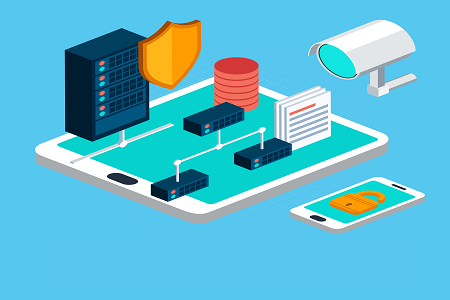Salient IT Services › Data Backup Lodi
What you need to know about data backup in Lodi
It’s (hopefully) obvious why companies of all sizes need a robust data backup system. What may be less obvious is how to put one in place, especially now that so many companies, particularly SMBs are cloud-first if not cloud-native. With that in mind, here is a quick guide to what you need to know about data backup in Lodi.
Data backups are a whole lot easier if you practice effective data governance
A data backup is essentially a snapshot of your data at a specific point in time. The more data you have, the longer it will take to back up (and restore) and the more it will cost (especially if you’re working in the cloud). This is acceptable if the data is necessary, but if you’re continually backing up data that actually belongs in a data archive, then you’re simply increasing your overheads without any payoff. The way to stop this is to apply robust data governance to ensure that only data in active use is backed up and that everything else is archived.

Cleaning up legacy data
If you’ve been in business for a while, you may be in a situation where you’re left with a pile of legacy data (which is hopefully not sensitive) which nobody seems to need or want but nobody wants to delete “just in case”. If this sounds familiar, then the most pragmatic approach may be to put everything into an archive and see if anyone complains. If they do, then you can restore the data. If they don’t, then you can wait until any relevant compliance deadline has passed and just delete it.
This may not be an ideal solution, since you will still incur data archiving costs, but it will be far more affordable than continually backing-up dormant data. There are two reasons for this. Firstly, the less data you back up, the less bandwidth you need. This in itself reduces costs. Secondly, archival storage is generally slower, and therefore cheaper, than backup storage. In fact, the difference in cost can be significant.
You generally want your production data plus two backups
You obviously need your production data and it can make a lot of practical sense to keep one backup in the same place as your production data. The reality is that most of the time data backups will be used to compensate for data being accidentally deleted by users and having a local copy of it makes it easy and quick to restore in these situations.
Having a second copy of it in an alternative location gives you protection against anything serious happening in your main location. If you’re already working in the public cloud, then the most sensible option is generally to back up to another public cloud. Just be sure to choose one which meets the same data-protection standards.
If you’re working in a private cloud, then you could still back up to a public cloud provided that you encrypted your data on your own servers and kept it encrypted until it was either used or deleted. Alternatively, you could create a second private cloud and back up your data to that.
Using a public cloud for data backup might work out more cost-effective, but then you would need to implement a second private cloud as a disaster recovery solution and you’d need both your main and DR private clouds to have import/export access to your public cloud as you will need to keep all the data in sync. Using a private cloud could be more expensive, but it could also do double-duty as a disaster-recovery solution.
Smart data backup strategies can help to keep costs down
As previously mentioned, the best way to keep costs down is to minimize the amount of data you back up. There are, however, also a couple of technical tricks you can use. The first is to use as much compression as you reasonably can. You may want to be a bit careful with this, particularly if you are compressing detailed images, as you can overdo it and cause a loss of quality. Used with reason, however, it can go a long way to decreasing the size of “heavy” files, such as images and video.
The second is to use a combination of full backups, incremental backups and differential backups. Choosing between incremental backups and differential backups basically boils down to choosing between saving resources as you back up versus saving hassle when you restore.
Incremental backups only backup data which has changed since the last backup. They are relatively quick to do, but it can be a challenge to restore from them. Differential backups only back up data which has changed since the last full backup. They take longer to do, but it can be much easier to restore from them.
If you’d like to speak to a reputable and experienced data backup provider in Lodi, please click here now to contact Salient IT.



